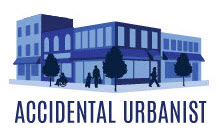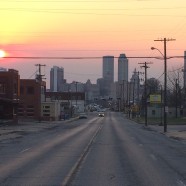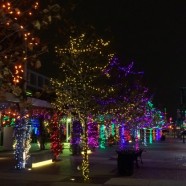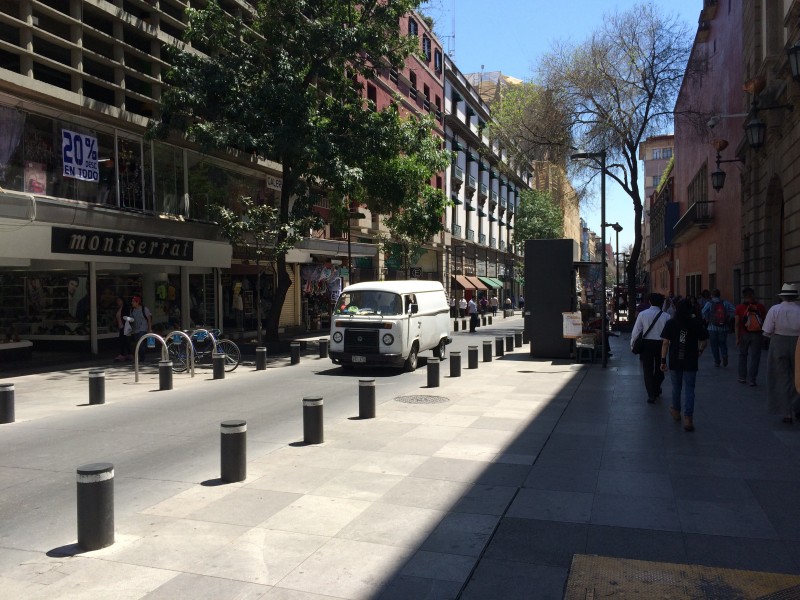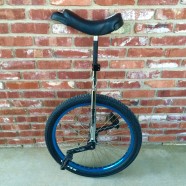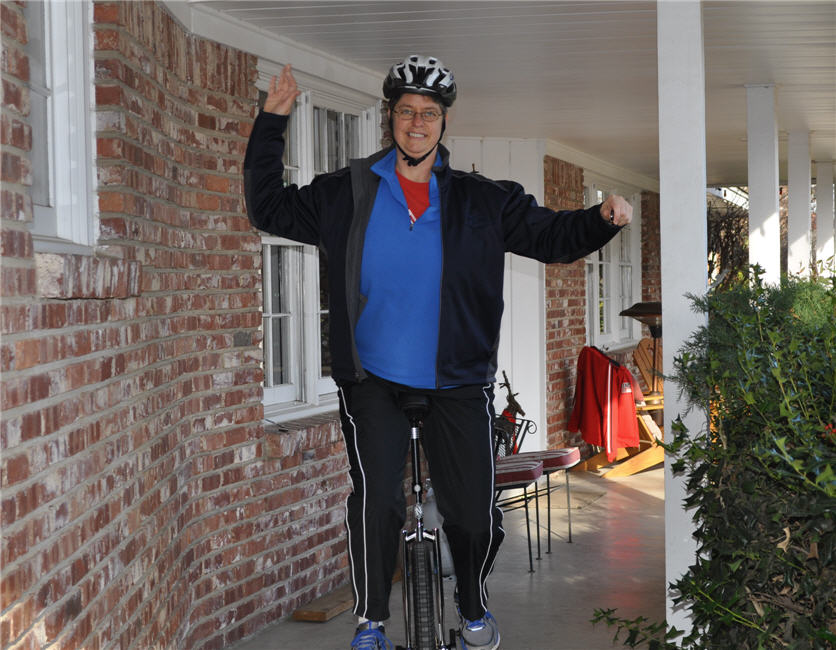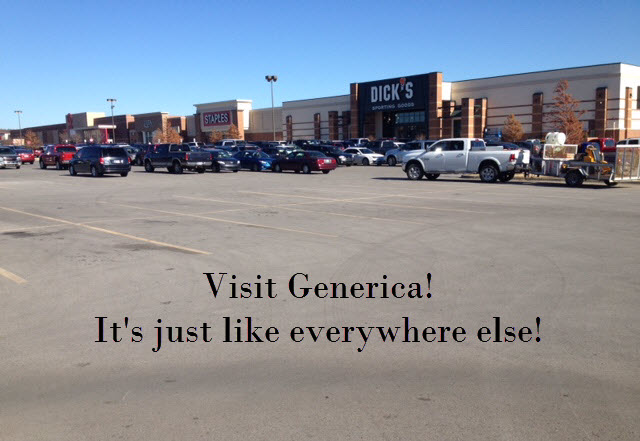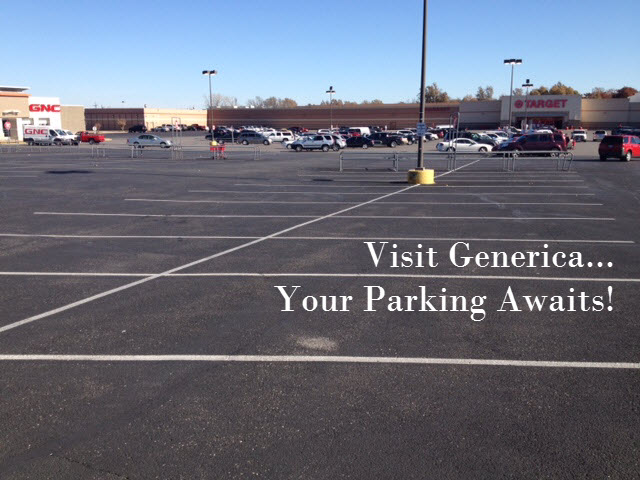Find a Place You Love That Needs You
After years of advocating for walkable neighborhoods and preservation of historic buildings, I decided to stop talking about it, and start doing it. So last year, I took the plunge and purchased a little 1915 bungalow fixer-upper near downtown Tulsa. I thought this would be a good way to learn the financial ropes of small development, build relationships with contractors, and hone my property-management skills before moving up to a small 4-plex or mixed-use building sometime in the future. As it turns out, it’s been all of that, and so much more.
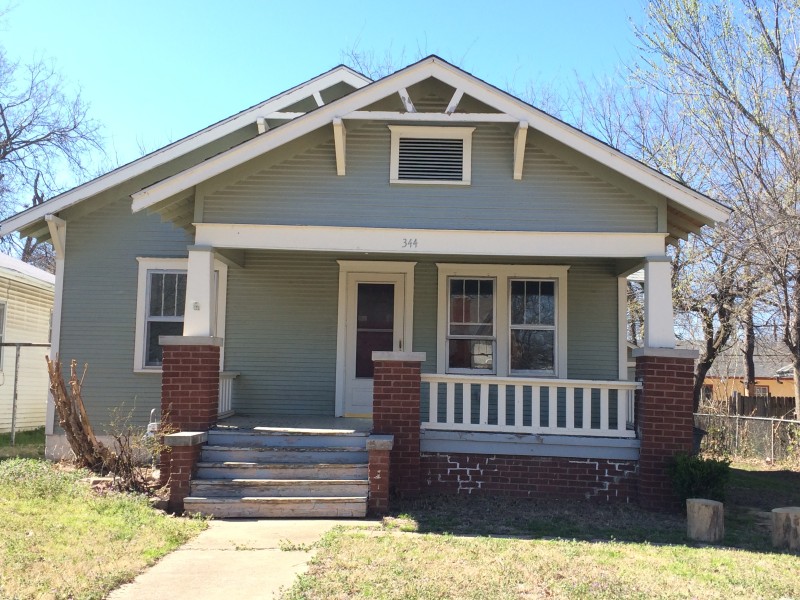
Photo by Sarah Kobos
“Find a place you love that needs you.”
My strategy was to comb older neighborhoods near downtown that need and deserve reinvestment. Basically, I was looking for a place with a compact street grid, alleys, and rundown housing with a couple hipster “indicator species” (brewpubs! yoga!) nearby. So when I saw a house come up in the local sheriff’s auction, I was ready.
Having attended a couple Incremental Development Alliance workshops, I worked up a pro forma based on expected rental income and the cost of improvements, financing, and operating expenses to determine how much I could pay for the house. Then I added about 30% to the renovation budget as a cushion against my own ignorance. The project still “penciled” with room to spare, so I set off to the sheriff’s auction feeling optimistic.
The funny thing is that I didn’t win the auction, but I did get the house.
The only other bidder was a young woman with her daughter by her side. Maybe I was stereotyping, but she looked like so many neighborhood advocates I’ve worked with over the years, it seemed silly to keep bidding against her. We were just making it more expensive for each other. So I stopped a few thousand dollars short of my (very conservative) top price and let her win the auction.
Afterwards, I introduced myself. Within minutes, we bonded over a shared disdain for replacement windows and Home Depot kitchens. She was indeed a preservationist who had renovated several houses in a nearby historic district. Tulsa being Tulsa, we had friends in common. So we exchanged phone numbers, and I left the auction feeling good about the experience, despite “losing” the bid.
A few weeks later, I received a call from her. For various reasons, she and her husband were not going to be able to start renovating the house for several months, and wondered if I would still be interested in it. If so, they would sell the house to me for the price they paid.
Which is how I came to own this little slice of history.
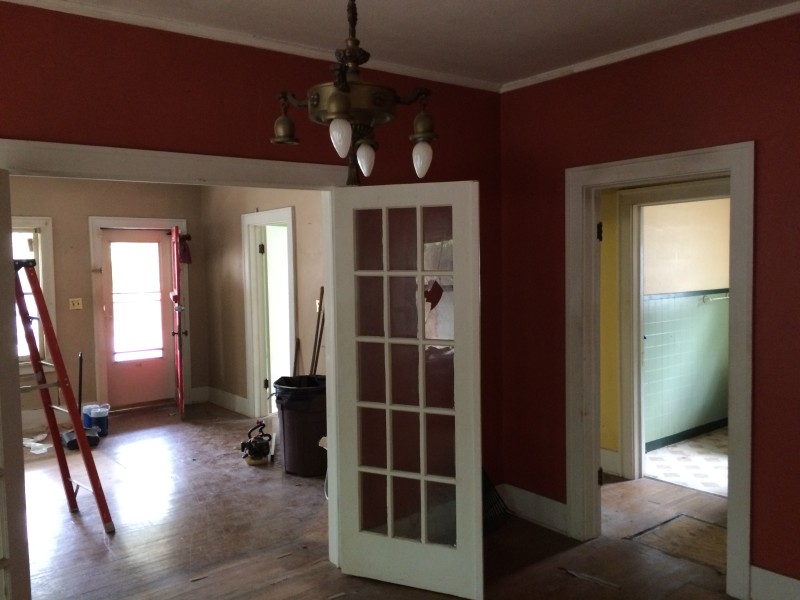
Photo by Sarah Kobos
The house is located on the dodgy end of an up-and-coming neighborhood about a mile east of downtown. Like most “streetcar suburbs” the neighborhood is defined by a compact street grid, houses with front porches on small lots, detached garages, and sidewalks throughout. There are a multitude of classic, if rundown, craftsman bungalows in the area, and everything is conveniently close to a couple historic “main street” districts. Which is to say, the neighborhood has good bones.
It also has pockets of crime and decrepit buildings, thanks to an abundance of slumlords who prey on people with few resources and fewer options.
The house I bought falls smack dab in between the good and the bad. If this street were the Korean Peninsula, my house would be the DMZ. To the south are mostly stable, fairly well-maintained homes with a mix of working-class and retired residents. To the north is slumlord deluxe, with a lot of… shall we say… “entrepreneurial” activities going on.
The house next door has a failing roof, boarded up windows, missing siding, exposed insulation, and an overgrown backyard. I can only assume the landlord is waiting for a good tornado and a sizeable insurance payment before maintenance will begin.
Nearby are a couple rundown 4-plexes, where the owners come by once a week to collect their rent in cash, and remove the front doors when people fail to pay. Door removal appears to be their main skill when it comes to property management. Tenants appear and disappear on a monthly basis, and “friends” come and go with a frequency that implies they’re not there to borrow a cup of sugar.
All this is to say that I’m operating a bit outside my comfort zone. While I’ve done my share of manual labor and blue-collar jobs, I realize that I’m basically a privileged, middle-class, college-educated white woman working in an area where I don’t always understand what’s going on around me. Since I can’t tell a meth addict from a person who lacks dental insurance, my policy is to be polite and respectful to everyone I meet, and hope that folks will return the favor. So far, so good.
Despite all this, I’m excited about the new house. It’s totally intact. Original three-above-one double hung windows with poured glass; original pedestal tub; original doors and fixtures; and oak floors throughout, even in the bathroom and the kitchen. Houses built in 1915 were constructed with lumber from old-growth forests, which means dense, straight wood with unbelievably tight grain. There is simply no way to replicate the quality of materials and craftsmanship that went into the creation of this house.
I remain forever grateful that none of the previous occupants had the desire (or possibly the budget) to ruin it. Had this house been located in a more affluent neighborhood, it would have been gutted. Vinyl windows and particle-board cabinetry from a big box store would have been installed. Light fixtures would have been replaced. Once trendy, now dated, backsplashes would have appeared.
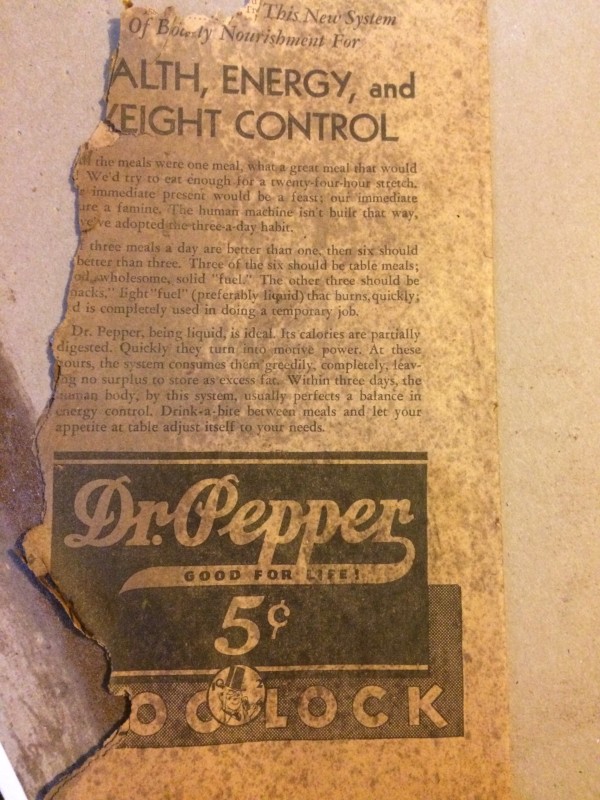
You never know what you’ll find in an old house. – Photo by Sarah Kobos
Old houses and high-quality craftsmanship develop patina over time. They were built to last, and it shows. They age with grace. They can be repaired. My job is to be respectful while I do it.
But there’s more to revitalization than simply fixing up old buildings. A neighborhood is an ecosystem, a quirky human habitat, and when it’s been damaged by generations of neglect, it probably needs help that has nothing to do with repairing roofs and bringing wiring up to code.
The most obvious problems spring from poverty and addiction. From there, it’s an easy spiral down. Folks with few options and a lot of time on their hands are going to get into trouble. Inability to pay lawyers and court fees means more families living on the edge. Criminal records limit job opportunities and housing choices. And concentrated poverty makes it hard to find a way out. When every person you know is in the same lousy circumstances, it’s harder to move up.
In some ways, a little gentrification would be a good thing in this neighborhood. So often people want to work, but there’s no one around to hire them. If I could afford it, I’d hire the whole neighborhood to scrape paint, pour concrete, trim trees and mow lawns. But since I’m living off my savings, I have to do the grunt work myself, and save the paid jobs for licensed professionals.
The whole experience has me thinking about ways to help the people who live nearby. I dream of finding ways to pay people to learn skilled trades. Creating places where you could borrow tools to work on projects or make crafts for sale. Finding ways to help people access the social services they desperately need but may not know are available. Developing policies that would protect people from unhealthy and unsafe slumlord housing and predatory lending.
I don’t have the answers. Right now, I’ve got my hands full just trying to fix up this one old house. Every day I’m humbled…but I’m learning. My project is one small step, and it’s not enough, but it’s a start. It’s just one of a multitude of small actions that will be needed to help make the neighborhood a better place for everyone.
– by Sarah Kobos
(Originally published by Strong Towns on 4/13/17)
Read MoreHoliday Contemplations from Concourse A
Anyone who says “it’s all about the journey” doesn’t fly coach.
I used to travel a lot for work. But because I traveled all over the country, and booked my flights based on convenience and price rather than brand loyalty, I flew on a lot of different airlines. I ALMOST achieved premier status on several different airlines, but never reached this exalted state on any single one. As a result, I flew coach.
Contorted like a pretzel, crammed like sardines—flying coach makes one simultaneously uncomfortable, pissed off, AND cliché.
I like people, generally. At least in theory. But when I fly, I become an angry, hard-hearted misanthrope.
One day, a couple Decembers ago, I found myself on the final leg of my trip, hating everyone on the plane for variety of reasons:
For being too cheap to check their luggage, making the boarding process slow and tedious as they awkwardly bobbled their oversized bags into the overhead bins.
For bringing heavy winter coats, then rolling them into St. Bernard-sized balls and stuffing them in the overhead compartments, eliminating approximately 1/3 of the available space. (This, even as harried flight attendants implored them to “please hold your coats until everyone has had a chance to place their carry-on luggage in the overhead bins…”)
For flying standby, despite being a large, broad-shouldered man, and occupying what was SUPPOSED to be the empty middle seat next to me—robbing me of six inches of my own space and forcing me to sit at a 75 degree angle like someone trying to avoid a painful hemorrhoid.
For jumping up out of their seats the moment the plane came to a stop and trying to barge in front of people to exit faster, even though we’re seated in row 32, dumbass, so where exactly do you think you’re going?
For still being too cheap to check their luggage (I hate these people TWICE each flight). And for performing the “drag and drop,” whereby individuals tug at their cumbersome bags until they fall from the overhead bins onto the people who were smart enough to remain seated, but not smart enough to fly in a private jet.
As I finally deplaned and made my way down the jetway, I was already hating people in a proactive way—not even waiting to reach the baggage area before despising them for how I knew they would behave: their over-eager pushing and crowding around the carousel like hyenas battling over a fresh kill.
And then…
As I entered the terminal, the sound of angels singing.
OK, not quite angels, but close. A high school choral group was singing Christmas carols a cappella in three-part harmony.
It is impossible to remain an asshole in the face of such simple beauty.
I stopped, and then walked closer to listen, the petty anger and cynicism melting from my heart.
The purity of their voices, their rich harmonies, their youth and earnestness—all such a contrast to the way I’d felt just moments before. As the sound embraced me, I found myself blinking back tears, as I sometimes do when surprised by a sunset, or the utter innocence of a baby’s stare. Or, it seems, a cappella singing in Concourse A of the Tulsa International Airport.
There’s something so vulnerable about pure, simple, beautiful things in this big–often ugly—world.
And yet.
And yet I am hopeful that the simple and the beautiful may prove more powerful than the angry and the cynical.
It’s a hope that grows stronger in me as I’m assaulted by each day’s news cycle.
So for this holiday season, and all the days and months to come…
Be kind. Be open. Be gentle. Create beauty. Lead with love.
Happy holidays.
Read MoreYou Gotta Go…to Ciudad de Mexico!
If you’re like me, you’ve never given much thought to Mexico City. Sure, back in 7th grade Geography class there were lots of maps to color and world capitals to memorize, but since then? Not so much.
When you talk to Americans about international travel, you’re likely to hear about trips to Europe, or Caribbean cruises, or even African safaris. If anyone mentions Mexico, you can expect to hear about beachfront resorts in places like Cozumel or Cabo San Lucas. But I don’t think I’ve ever heard someone say they were specifically going to Mexico City for vacation.
Which is crazy, because Mexico City is amazing!
In typical clueless American fashion, I had no idea—until an impromptu trip opened my eyes to the wonder of this incredible place. And I am humbled by my ignorance of this city with so much to teach us!
One of my favorite things about travelling is that it challenges your preconceived notions. In this case, my ignorance was so vast, I hadn’t even bothered to have expectations. I knew Mexico City was located at high altitude, and was bigger than NYC. Other than that, I’d been told not to carry valuables or wear shorts. Armed with this “knowledge” I generated a vague mental image that was an amalgam of other places I’d been. I guess I expected a loud, crowded, dirty and possibly dangerous place—kind of a cross between the chaos of Bangkok and the grit of Guatemala City.
Boy, was I wrong!
Continuously inhabited since 1325, Mexico City is the oldest capital city in the Americas, and the largest Spanish-speaking city in the world. The architecture is stunning, the food is exquisite and the people are incredibly gracious and kind. You’ll feel like you’re in Europe, except Mexico City’s friendlier, more affordable, and doesn’t cause jet lag.
It’s a 1.5-hour flight from Houston, and a $300 round-trip ticket from Tulsa on Southwest Airlines. Seriously, it’s easier to get to Mexico City than most places I’ve flown in the United States.
All of which makes it possible to go there for a long weekend (or a week, or a month). Which you should do, because, in addition to being a super cool place, it’s an urban design nerd’s dream destination.
Here are just a few of the things I loved about Mexico City.
Architecture
Mexico City doesn’t demolish their historic buildings after a few decades because they need more parking. This is a city committed to preserving its architectural treasures, even as the ground beneath them shifts mercilessly. (Much of the city center was built upon what was previously a series of lakes. As it turns out, drained lake beds do not create the most stable foundation for enormous stone buildings. Earthquakes haven’t helped, either.)
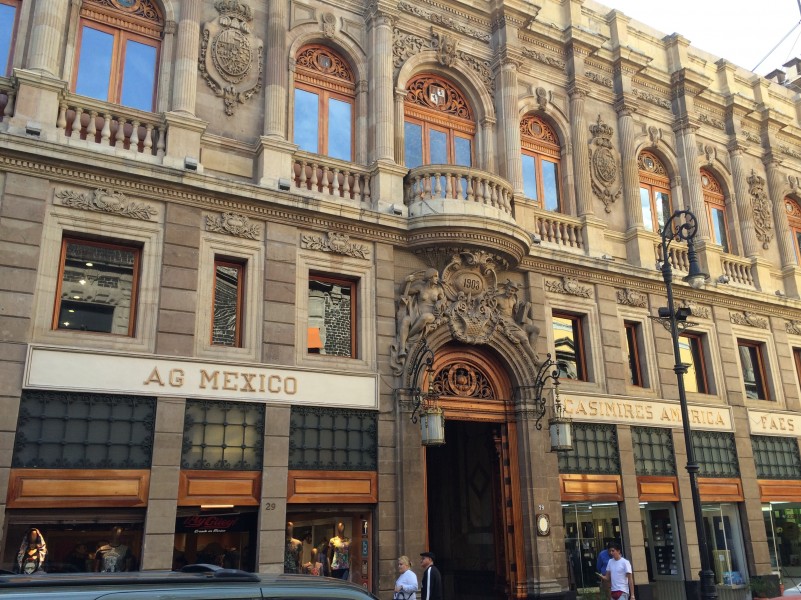
Here you’ll find an impressive array of architectural styles ranging from baroque to colonial to neo-classical to art deco and modern—all built around ancient Aztec ruins. The city exudes a palpable reverence for history, culture and design. Even the public restrooms are gorgeous. Architects and craftsmen are respected. These are my kind of people.
Whimsy
Some neighborhoods are so charming, even their crosswalks are delightful. Seriously? You want to build a wall to separate us from a people whose pedestrian crossings look like this?
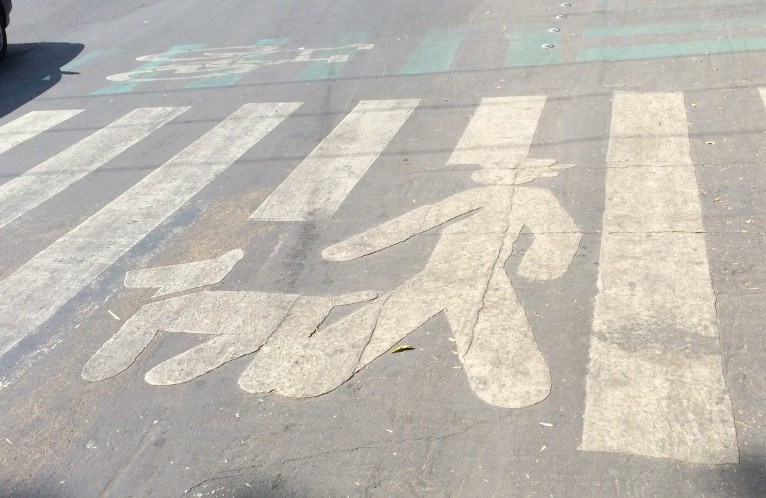
Or this wall inside a restaurant… Yes. It’s a wall.
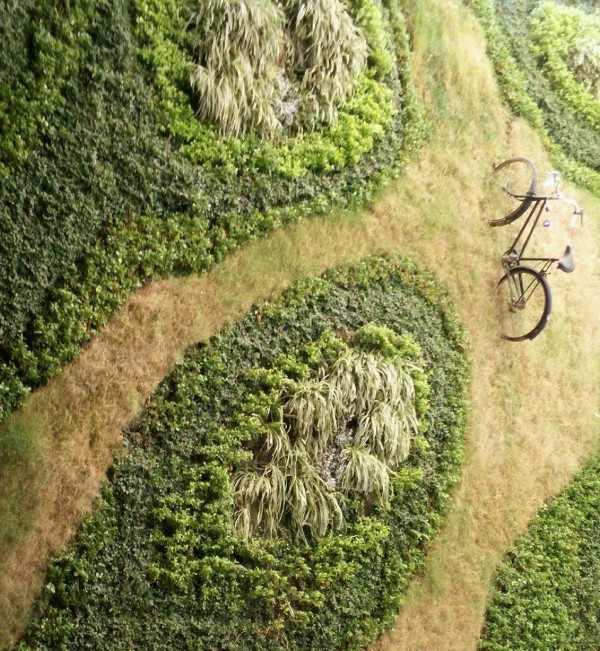
Protected Bike Lanes
Mexico City is also way ahead of us when it comes to creating safe places for cyclists, with over 90 miles of protected bike lanes.
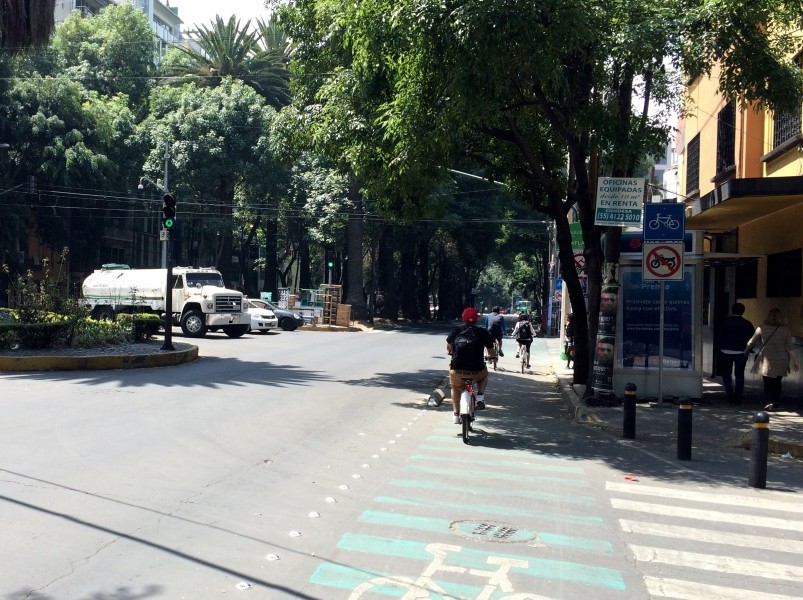
They use wheel stops as an economical way to separate the bike lanes from auto traffic. This protects cyclists far better than striped lanes alone, and dramatically enhances the sense of safety you feel while biking. At the same time, they clearly delineate the cycling lane and send a message that the public right-of-way is for all users, not just people with cars.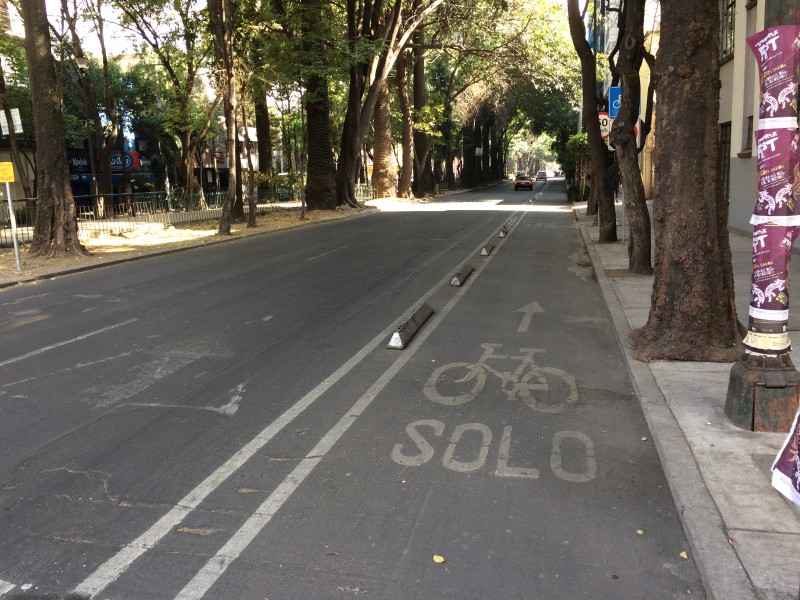
Bike Share
Did I mention that Mexico City has the 4th largest bike share system in the world, with 6,000 bikes at 444 locations throughout the city?
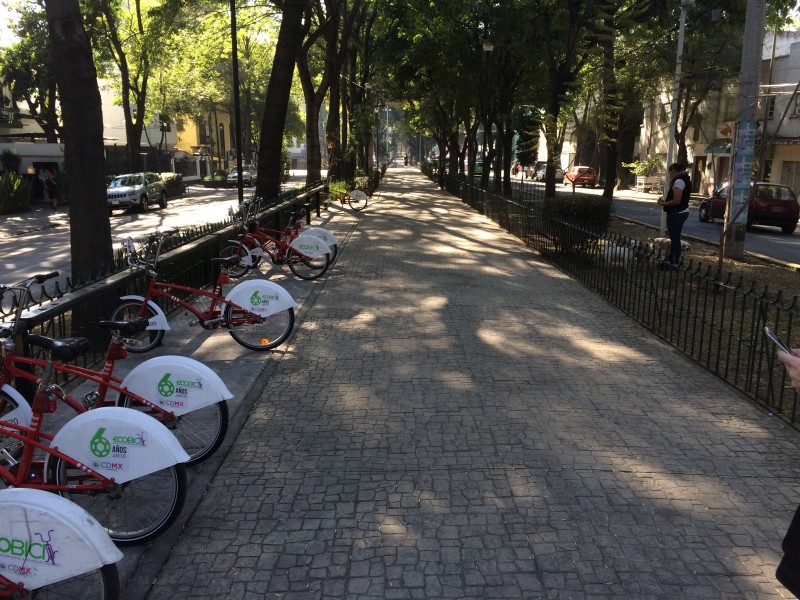
Once a week, on Sundays, they close 35 miles of city streets to cars, allowing thousands of cyclists to flood the roads instead. Or, if you’re hanging out in the Condesa neighborhood, you could ride down these gorgeous boulevards (shown above).
Street Trees
In neighborhoods throughout the city, trees line the streets, offering soothing respite from the sun in this high-altitude metropolis.
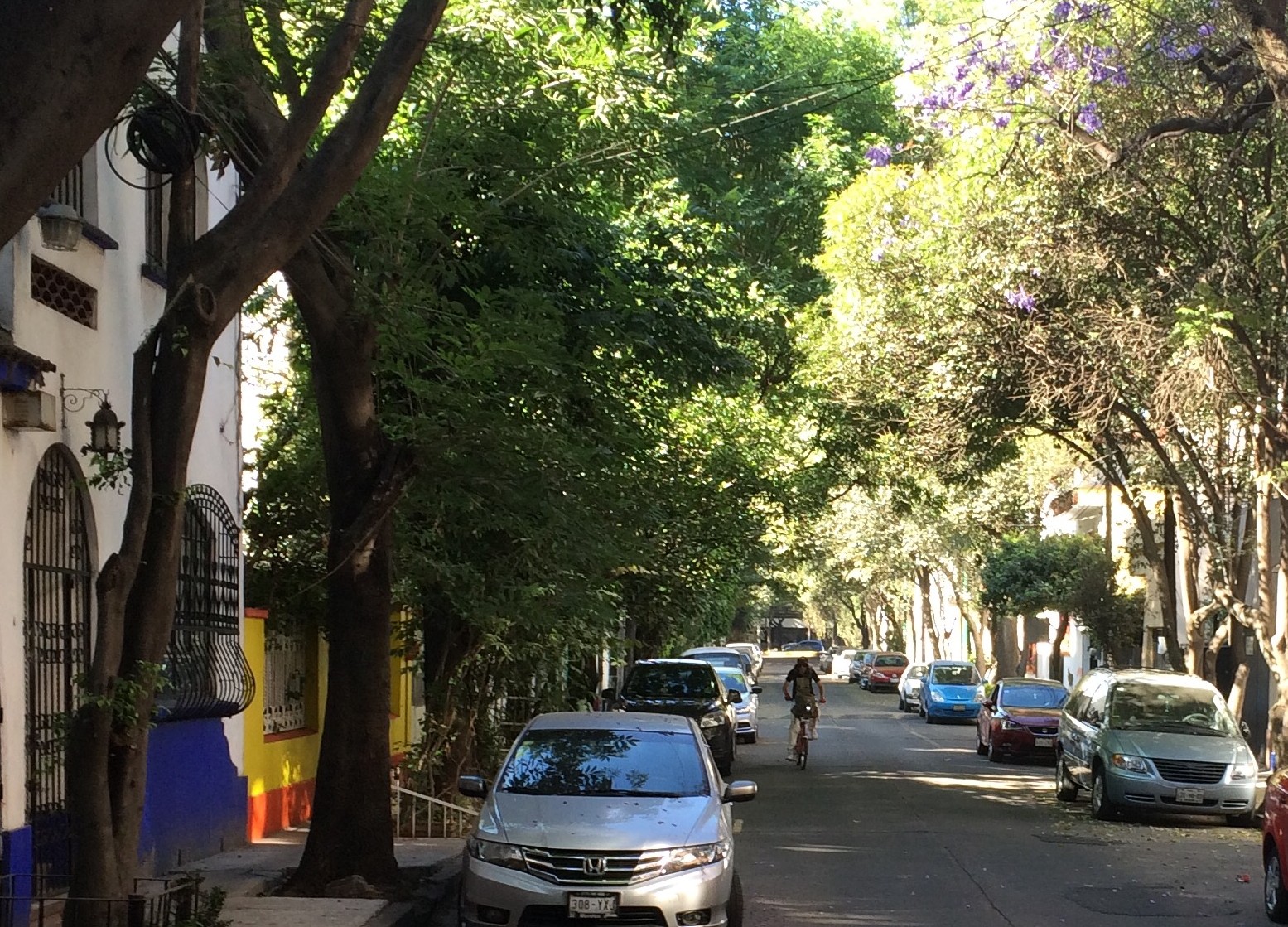
In addition to a long list of environmental benefits, trees planted along city streets make people happy. They calm traffic speeds, provide shade, and form a buffer between sidewalks and cars.
Street trees create human-scaled spaces, soften the sharp angles of a city, and make every avenue feel like a hug. I don’t know how else to explain it, but whether walking or driving, a tree canopy creates intimacy. You feel its protective embrace–while a dose of natural beauty soothes the soul.
Sidewalk Cafes
Sidewalk cafes make neighborhoods more lively, inviting and safe. They put “eyes on the street” and create destinations where you can hang out alone, or engage with others as the mood suits you. Sidewalk cafes bring warmth to the street through the simple act of getting people outdoors–and by sharing the joy of watching people having a good time.
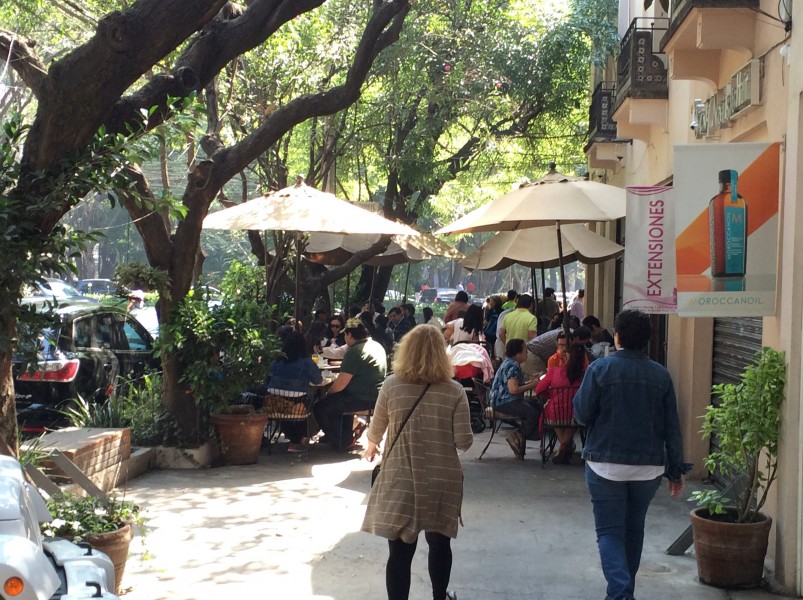
Pocket Parks
In our zeal to create space for cars, we’ve often been overly aggressive with the asphalt. Here’s a lovely little example of what you can do to reclaim those paved areas for people.
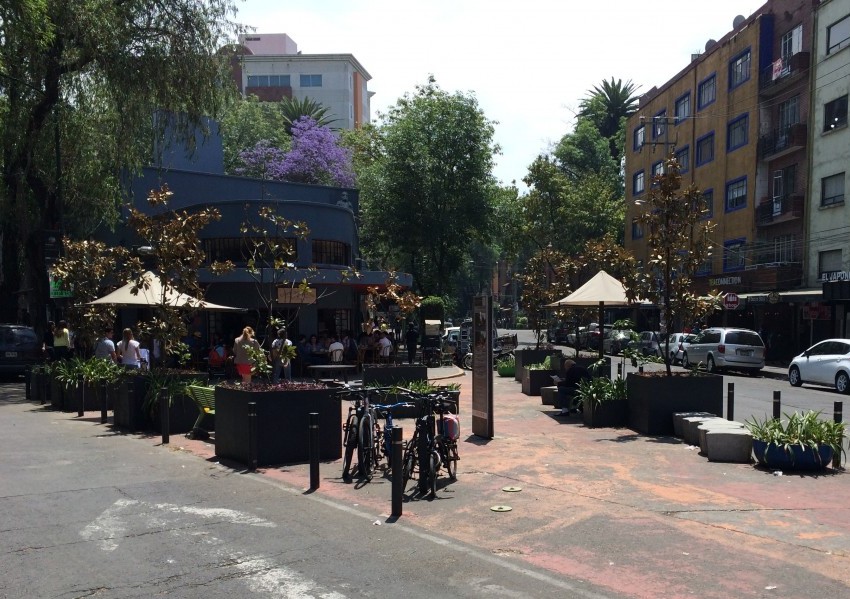
This illustrates what you can achieve when your city has a Public Space Authority dedicated to improving quality of life for all inhabitants. Thumbs up for creating park space for people in an area that was previously utilized only by cars.
Reclaiming Streets for People
Throughout the Centro Historico, many streets have been rededicated to people on foot. As a result, thousands more folks can traverse these public spaces safely and comfortably. Just imagine the misery and congestion if every person in this photo was driving a car!
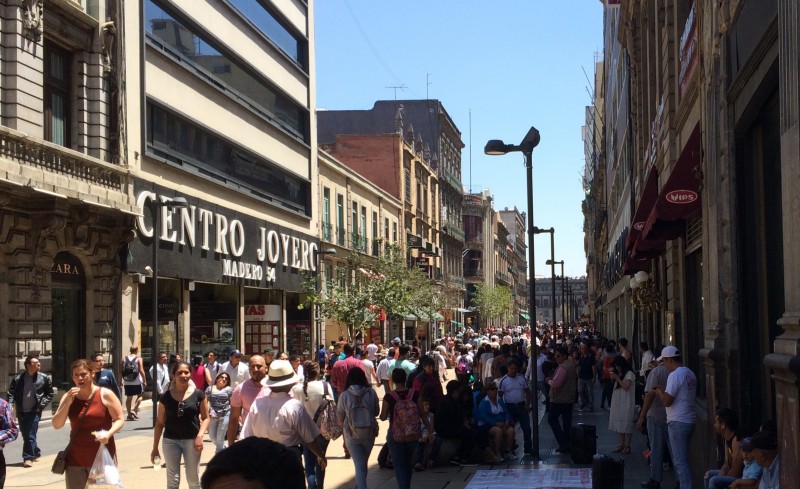
On some streets auto travel is limited to a single lane, with bollards instead of curbs marking the driving route. This sends the message that the street is primarily for people, but essential vehicles can get through. It allows pedestrians to easily cross the street without having to step on and off curbs (a boon to people with physical challenges). And it limits the danger zone where people and cars intersect.
This is what it looks like when you prioritize people instead of cars.
Parks
Did I mention the parks? You’ve got to love a culture that cherishes nature enough to create such dignified and beautiful green spaces.
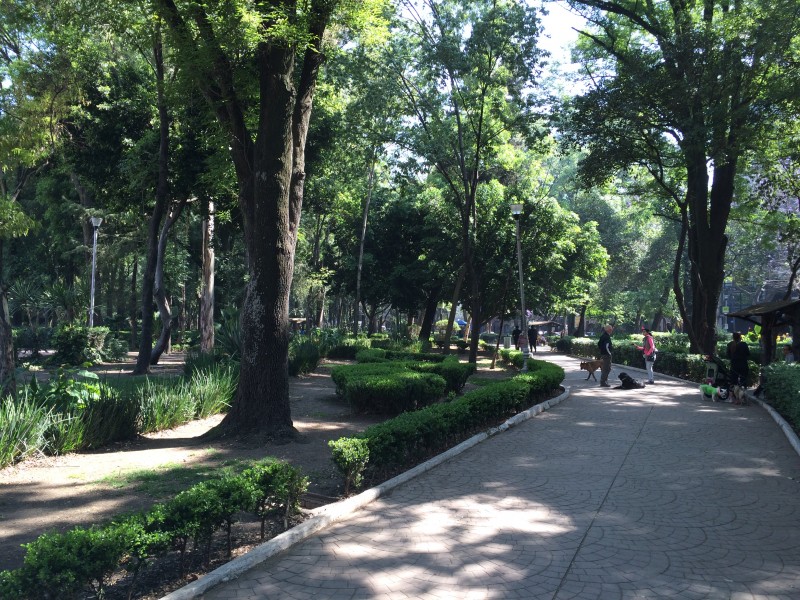
When you enter these magical realms, you can feel your heart rate slow as a sense of peace settles over you. “Biophilia” is the term Edward O. Wilson coined do describe our inherent attraction to nature. Parks play a critical role in the urban ecosystem, reducing stress and increasing the health and happiness of residents.
Plus… free wi-fi!
I could go on and on—about courtyards and colors and casual dining…
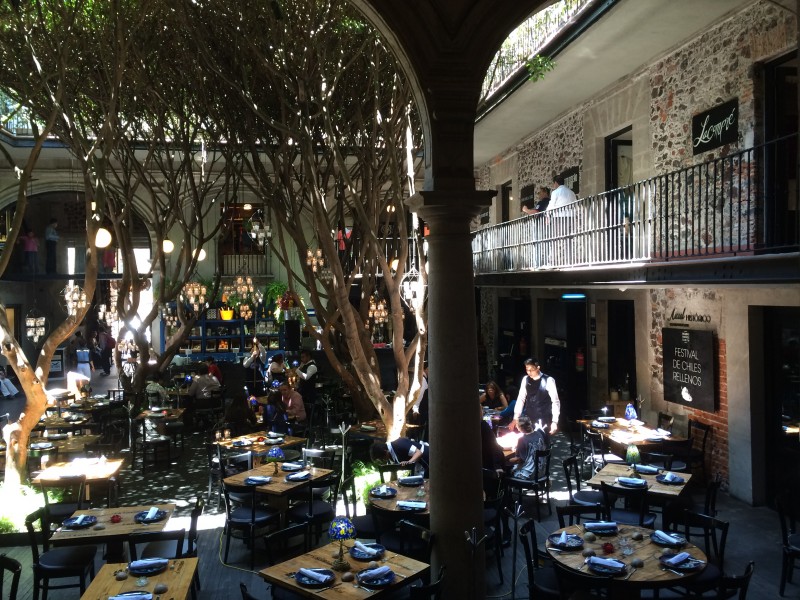
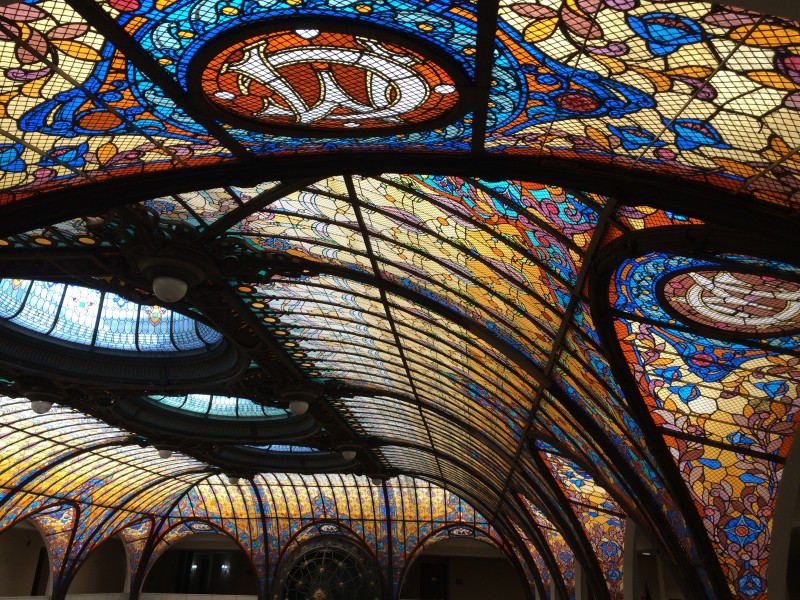

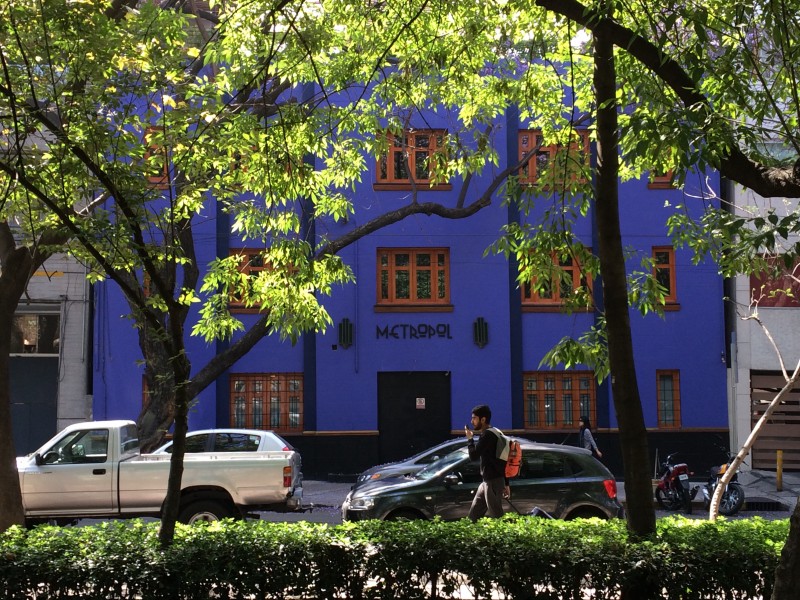
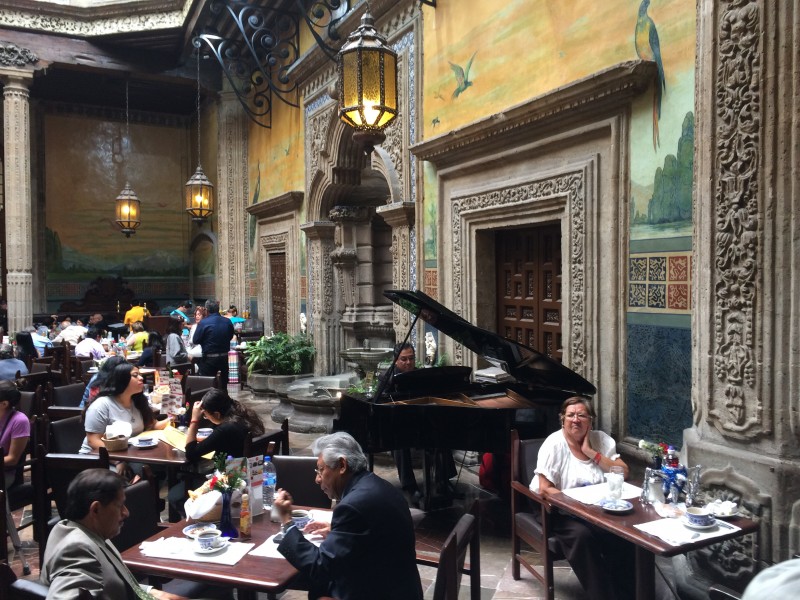
But seriously, what are you waiting for?
Get on a plane and visit this gorgeous city. See for yourself.
Your only regret will be that you didn’t do it sooner.
– Sarah Kobos
Read MoreZen and the Art of Unicycle Riding
Although this blog is supposed to be dedicated to urban design, transportation and land use, today it’s going to be about something even more geeky and esoteric: learning how to ride a unicycle.
Let’s call it “alternative transportation,” and pretend it counts. I’m hoping the blog police will let me off with a warning.
Where to begin?
Like most folks, I’ve seen a lot of people ride unicycles—circus performers, jugglers, the kid who delivered our paper in the 70’s—but I’d never tried it myself until a few years ago. I was visiting a friend whose nieces owned a small, yellow “uni,” and I simply had to give it a shot. While my attempts to ride it were laughable, I was intrigued.
At first glance, a unicycle looks like some sort of early prototype that should have been abandoned shortly after the invention of the wheel. At second glance, it makes even less sense. Under no circumstances does it seem like a practical approach to personal transportation.
And yet, it’s the improbability that makes unicycling so appealing.
Three years after seeing that little yellow unicycle, and about a month after my 48th birthday, I finally bought one.
Now, if I could just ride the darn thing.
Embrace the process.
Unicycling is not a hobby for those seeking instant gratification. Achievements occur at the nano level, so you have to be able to discern tiny, incremental improvements—then celebrate them with all your might.
You also have to be willing to look like a complete dork.
They say it takes between 15 and 30 hours of dedicated practice to become competent on a unicycle. You will look like an idiot during most of that time. But as a friend said: “What’s 30 hours of frustration compared to the kick-ass reality of being able to ride a unicycle for the rest of your life?”
So true. And since I needed a new challenge, it’s been a fun diversion. Really, this whole unicycle thing is turning out to be a metaphor for life.
Here are some of the lessons I’ve already learned:
Feeling terror just means you’ve made a healthy decision to step outside your comfort zone.
The first time you attempt to balance on a unicycle, your body (correctly sensing a threat to life safety) floods your cells with adrenaline, leaving you shaky and trembling. The following day, you’ll be sore in 38 different muscles you didn’t realize you had. This is merely a sign that you haven’t been living up to your potential. Sitting at your desk isn’t cutting it. Maybe it’s time to try more things and shake it up a bit!
You’re also sore because…
Fear takes energy.
I can’t begin to express just how impossible unicycling seems at first. You are keenly aware that the unicycle is a slippery devil, disobedient to your will, and bent on your destruction. For this reason, you tend to clench parts of your body that have rarely been tensed. It’s exhausting. Try to relax. There’s enough going on without adding unnecessary stress.
You have to move in the direction of your dreams before you can get there.
Unicycling is about having the courage to lean forward into nothingness, and trusting that your legs can pedal fast enough to keep the center of gravity beneath you. The difficulty is that once you’ve finally learned how to balance in place on a unicycle, it starts to feel comfortable and safe. Your body naturally wants to remain in this position of security. But the only way to get anywhere is to lean forward and go. So you have to tip ever so slightly forward—which feels exactly like falling—and start pedaling.
If you think about it, this is precisely how everyone learns to walk. We’ve simply forgotten the lessons of toddlerhood: Be brave! Don’t just stand there, go someplace! Lead with your heart. Falling is part of the process. And remember to celebrate each and every little step along the way.
Brute force doesn’t work.
This one’s difficult to explain. In the beginning, one of the hardest things is to simply rest your weight on the seat. This is scary because the unicycle is a tipsy and unreliable vessel, poised to flop in any direction at any time. But the pedals are “fixed” to the wheel, which is oddly comforting. The pedals appear to be the only thing you might be able to control. So you’ll be tempted to try to exert your will through them using every muscle in your legs.
But here’s the catch. Trying to balance delicately on something while exerting brute force with the largest muscles of your body is difficult and exhausting. You’re also wasting a lot of strength pushing down, when your goal is to go forward.
The answer is simple and elegant. Like the song says, “Let it go!” (I know, I know. Sorry.) Don’t fight with the thing, just sit on it. Really sink into the seat. For some reason, as soon as you do this, everything becomes easier. Since you’re no longer exerting brute force, you can relax and feel your balance. And because you’re not putting all your weight on the pedals, ironically, pedaling becomes much easier and more fluid. As soon as you stop fighting it, you start getting somewhere.
It’s better when you just go for it.
Weirdly enough, when you hold back, you’re much more likely to fall than when you just go for it. Due to some physics that I can’t explain about centripetal force and inertia and who knows what else, the unicycle becomes a lot more stable as soon as you start pedaling. Anyone who’s ever ridden a bike knows this. You can cycle comfortably all over town as long as you’re moving. But if you try to balance on the bike while stopped at a stoplight, it becomes incredibly hard to stay upright. So once you get started, keep going! Momentum is your friend.
Doubt doesn’t help.
Eventually, you’ll experience a moment where you think: “Hey, this is working! This feels right! I’m doing it!” which is inevitably followed by: “Holy crap! This is scary! I can’t do this!” Doubt creeps in. You get nervous and pull back. Which immediately causes you to dismount. And by that I mean fall/jump off. Try to hold onto that other feeling. The one that, for just a split second, felt like grace. Focus on your successes, not your fear and failures.
Life is about incremental progress.
So here’s where we can bring this whole thing back to cities and urban design.
In many ways, my unicycling skills mirror my hometown’s early attempts at complete streets and smart urban design. We’re not there yet, and mostly we don’t know what the hell we’re doing, but we’re making small, incremental progress. We make a lot of mistakes, but we’re starting to do some things right.
In Tulsa, we’ve updated the zoning code, which will allow smart people to build better places by right, not via special exception. We’ve reduced minimum parking requirements, which will help entrepreneurs who want to revitalize old buildings in historic parts of town. Our city engineers are beginning to understand what complete streets are, and they’re starting to think about bike lanes and sidewalks as critical components of the public right-of-way. People are beginning to talk about the harsh economic realities of sprawl and car-centric design. And soon, we’ll be updating our subdivision regulations, to ensure neighborhoods are designed for connectivity, not cul-de-sacs.
We have a long way to go before we master this thing, but in between our mistakes, we’re doing more and more things right.
It’s progress. I’m learning to respect that.
Happy New Year! Keep pedaling!
by Sarah Kobos
Read MoreFungible or Great? What’s Your City’s Goal?
We all know what draws people to a place. Unique settings, historic districts, beautiful streets and parks. Places that cajole you and make you want get out of your car and explore. They can be invigorating and exciting, or beautiful and serene. Either way, they encourage discovery and leave you wanting more.
Inevitably, these are places of civic pride, proudly displayed on post cards and visitor’s bureau publications.
Unfortunately, our modern system of zoning often prevents us from building the very things that our visitor’s bureau would love to celebrate. Our zoning code ensures that we create great places for cars—but makes few allowances for the types of places that make communities proud.
Buildings must be set back far from the street. Every development must provide an absurd amount of parking. The width of driveway aisles and the size of parking spaces are immutable. Meanwhile, pedestrian amenities are optional afterthoughts. Oh, look! An awning. That’s adorable. Call the Visitor’s Bureau and tell them to bring a camera!
Over the course of decades, our zoning codes have created the perfect habitat for car-oriented national chains. And our reliance on sales tax makes city officials reluctant to demand something better from developers. Any proposal, no matter how generic or disposable, is greeted with enthusiastic approval when a municipality’s fate rests upon retail receipts.
Unfortunately, it’s hard to market your city, when all that growth adds nothing special to the place.
But what’s the long game?
Do we want to live in Generica? Do we really need all those national chains? Is our city’s goal to be redundant, offering only those things which can be found along any Interstate corridor in the nation?
Or do we want to create places of lasting quality that build long-term community wealth? Because if we want our city to be valued, we need to focus on what makes it unique and sets us apart.
It’s such an obvious fact, it’s amazing that we manage to ignore it every day.
Read More